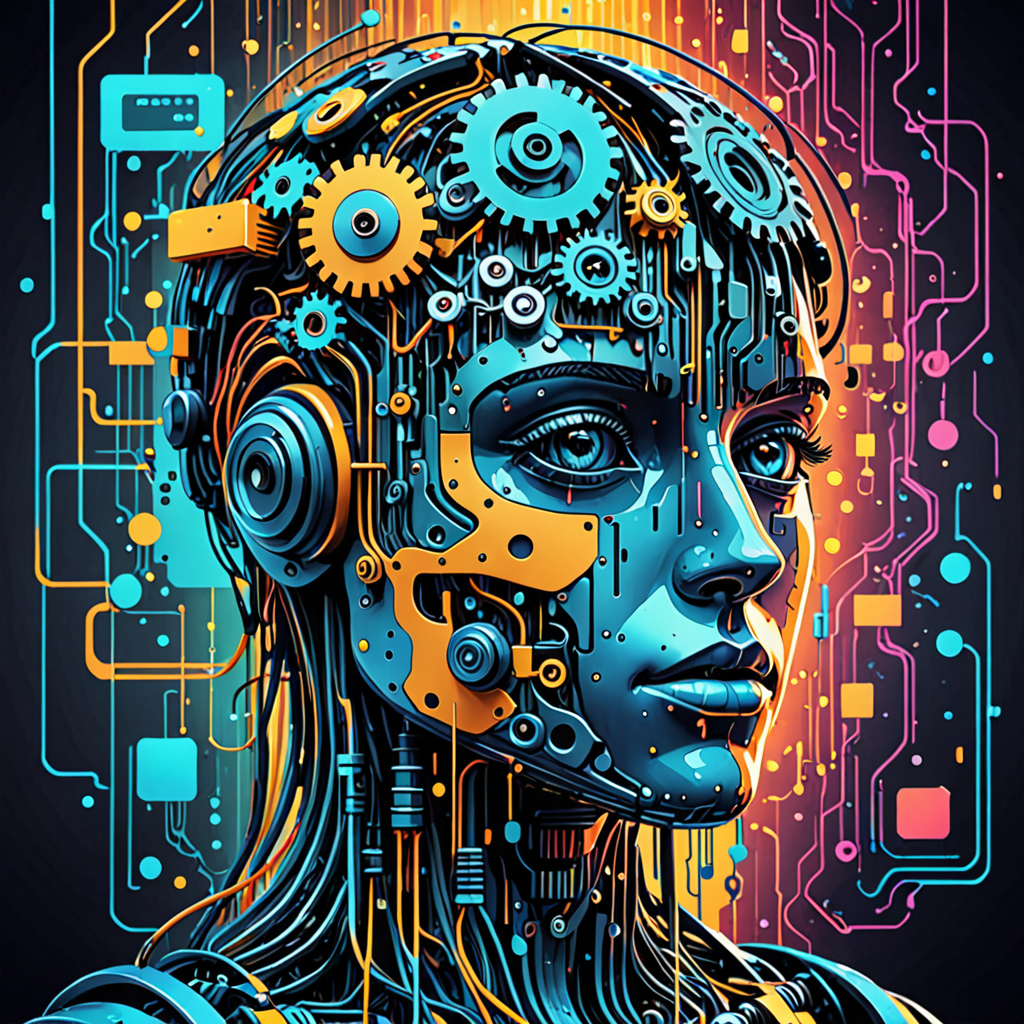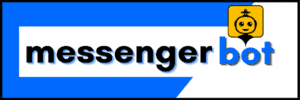In the rapidly evolving landscape of artificial intelligence, understanding how to effectively conduct a chat bot test is crucial for developers and businesses alike. This article delves into the essential tools, techniques, and insights necessary for successful chatbot testing, ensuring that your AI solutions meet user expectations and perform seamlessly. We will explore the importance of chatbot testing in AI development, the key components of a robust testing framework, and the relevance of the Turing Test in evaluating chatbot capabilities. Additionally, we will discuss the various types of chatbots, including free options available in the market, and provide strategies for identifying and interacting with these AI-driven systems. Whether you’re looking to enhance your chatbot’s performance or simply understand the intricacies of chatbot technology, this comprehensive guide will equip you with the knowledge needed to navigate the world of chatbot testing tools and beyond.
Understanding Chatbot Testing: An Overview
Chatbot testing is a critical component in the development of artificial intelligence systems, ensuring that chatbots function effectively and meet user expectations. As businesses increasingly rely on chatbots for customer interaction, rigorous testing becomes essential to enhance user experience and operational efficiency.
Importance of Chatbot Testing in AI Development
The significance of chatbot testing lies in its ability to validate the performance and reliability of AI-driven systems. Effective testing helps identify potential issues before deployment, ensuring that the chatbot can handle various user interactions seamlessly. This process not only enhances user satisfaction but also builds trust in the technology. By implementing a robust testing framework, businesses can ensure their chatbot artificial intelligence examples are equipped to manage real-world scenarios, ultimately leading to improved engagement and retention rates.
Effective Strategies for Chatbot Testing
To conduct a successful chat bot test, consider the following strategies:
- Requirements Gathering: Begin by defining the chatbot’s purpose and functionalities. Understand user expectations and the specific tasks the chatbot is designed to perform. This foundational step ensures that all testing aligns with user needs and business objectives.
- Comprehensive Planning: Develop a testing strategy that outlines the scope, objectives, and resources required. This plan should include timelines and the types of testing to be conducted, such as functional, usability, and performance testing.
- Test Case Design: Create detailed test cases that cover all possible user interactions with the chatbot. This includes various scenarios, edge cases, and potential user inputs. Ensure that the test cases reflect real-world usage patterns to provide meaningful insights.
- Integration with Real User Scenarios: Simulate real user interactions by integrating the chatbot with actual user scenarios. This approach helps identify how well the chatbot performs in practical situations, including handling unexpected queries and maintaining context.
- Performance Testing: Assess the chatbot’s performance under different loads to ensure it can handle multiple users simultaneously without degradation in response time. Tools like LoadRunner or JMeter can be utilized for this purpose.
- Natural Language Processing (NLP) Evaluation: Evaluate the chatbot’s NLP capabilities by testing its understanding of various dialects, slang, and context. This step is crucial for chatbots like Messenger Bot, which often interact with diverse user bases. Use metrics such as intent recognition accuracy and entity extraction effectiveness.
- Continuous Testing and Feedback: Implement a cycle of continuous testing and user feedback collection. Regularly update the chatbot based on user interactions and feedback to improve its performance and user satisfaction over time.
By following these strategies, you can ensure that your chatbot is robust, user-friendly, and capable of meeting the demands of its intended audience. For further reading on chatbot testing methodologies, refer to resources such as the American Marketing Association for marketing insights and best practices.

Understanding Chatbot Testing: An Overview
Chatbot testing is a critical component in the development of artificial intelligence systems, ensuring that these automated tools function effectively and meet user expectations. As businesses increasingly rely on chatbots for customer engagement, understanding the importance of thorough testing becomes paramount. This section delves into the significance of chatbot testing and the essential components that form a robust testing framework.
Importance of Chatbot Testing in AI Development
The role of chatbots in enhancing customer interactions cannot be overstated. Effective chatbot testing ensures that these AI-driven tools provide accurate, timely, and relevant responses to user inquiries. By rigorously testing chatbots, businesses can identify and rectify issues that may hinder user experience, ultimately leading to higher satisfaction rates and improved engagement. Moreover, testing helps in validating the chatbot’s ability to handle various scenarios, ensuring it can adapt to different user needs.
Key Components of a Chatbot Testing Framework
A comprehensive chatbot testing framework should encompass several key components:
- Functional Testing: This involves verifying that the chatbot performs its intended functions correctly, such as responding to user queries and executing commands.
- Performance Testing: Assessing the chatbot’s response time and its ability to handle multiple simultaneous interactions is crucial for maintaining a seamless user experience.
- Usability Testing: Evaluating how easily users can interact with the chatbot helps identify areas for improvement in the user interface and overall experience.
- Security Testing: Ensuring that the chatbot adheres to security protocols protects user data and builds trust with customers.
Utilizing chatbot testing tools can streamline this process, allowing developers to automate various testing scenarios and enhance the overall efficiency of the testing phase.
Has any chatbot passed the Turing test?
The Turing Test, proposed by Alan Turing in 1950, remains a significant benchmark in evaluating a machine’s ability to exhibit intelligent behavior indistinguishable from that of a human. One notable example is Eugene Goostman, a chatbot that gained attention for allegedly passing the Turing Test in 2014. Developed by a team of researchers, it simulates a 13-year-old boy from Ukraine, allowing it to engage in conversations that can sometimes mislead human evaluators into believing they are interacting with a real person.
While Eugene Goostman’s performance was notable, it is essential to understand that the criteria for passing the Turing Test can be subjective and context-dependent. In various assessments, including the one conducted at the Royal Society in London, Eugene reportedly convinced 33% of judges that it was human, which sparked debates about the validity of such claims.
Other chatbots, such as Google’s Meena and OpenAI’s ChatGPT, have also demonstrated advanced conversational abilities, but none have definitively passed the Turing Test in a universally accepted manner. These systems utilize deep learning and natural language processing to generate human-like responses, yet they still exhibit limitations in understanding context and nuance.
For further reading on the Turing Test and advancements in chatbot technology, you can refer to sources such as the Association for the Advancement of Artificial Intelligence and the Stanford Encyclopedia of Philosophy.
Understanding Chatbot Testing: An Overview
Chatbot testing is a critical aspect of developing effective artificial intelligence solutions. As businesses increasingly rely on chatbots to enhance customer interactions, ensuring these AI-driven tools function correctly and meet user expectations becomes paramount. A comprehensive chat bot test not only improves user experience but also boosts the overall effectiveness of the chatbot in various applications.
Importance of Chatbot Testing in AI Development
Testing chatbots is essential for several reasons:
- Quality Assurance: Regular chatbot testing ensures that the AI performs as intended, providing accurate responses and maintaining a high level of user satisfaction.
- Identifying Bugs: Through systematic testing, developers can identify and rectify bugs or inconsistencies in the chatbot’s responses, enhancing its reliability.
- User Experience: A well-tested chatbot can significantly improve user engagement by delivering timely and relevant information, ultimately leading to higher conversion rates.
- Adaptability: Continuous testing allows chatbots to adapt to changing user needs and preferences, ensuring they remain effective over time.
Key Components of a Chatbot Testing Framework
To effectively test chatbots, a robust framework should include the following components:
- Test Scenarios: Create diverse scenarios that mimic real user interactions. This includes testing for various intents and ensuring the chatbot can handle unexpected queries.
- Performance Metrics: Establish metrics to evaluate the chatbot’s performance, such as response time, accuracy, and user satisfaction ratings.
- Automation Tools: Utilize chatbot testing tools that automate the testing process, allowing for more efficient and comprehensive evaluations.
- Feedback Mechanism: Implement a system for collecting user feedback post-interaction, which can provide valuable insights for future improvements.
Chatbot Testing Tools: Enhancing Your Testing Process
Testing chatbots is crucial for ensuring they perform effectively and meet user expectations. A robust chatbot testing framework not only identifies issues but also enhances the overall user experience. Here, we explore essential tools and strategies for effective chatbot testing.
Essential Chatbot Testing Checklist
When conducting a chat bot test, having a comprehensive checklist can streamline the process. Here are key components to include:
- Functionality Testing: Ensure all features work as intended, including automated responses and workflow automation.
- Usability Testing: Evaluate the user interface and interaction flow to ensure a seamless experience.
- Performance Testing: Assess the chatbot’s response time and ability to handle multiple queries simultaneously.
- Security Testing: Verify that user data is protected and that the chatbot complies with privacy regulations.
- Integration Testing: Check that the chatbot integrates smoothly with other systems, such as CRM and e-commerce platforms.
Utilizing chatbot testing tools can further enhance this process, allowing for automated testing scenarios and detailed analytics.
Popular Chatbot Testing Jobs and Career Opportunities
The demand for skilled professionals in chatbot testing is on the rise as businesses increasingly rely on AI-driven solutions. Here are some career opportunities in this field:
- Chatbot Tester: Focus on evaluating chatbot functionality and user experience.
- AI Quality Assurance Engineer: Ensure the quality and performance of AI systems, including chatbots.
- Conversational Designer: Create engaging dialogue flows and user interactions for chatbots.
- Data Analyst: Analyze user interactions and feedback to improve chatbot performance.
As the landscape of chatbots evolves, professionals equipped with skills in chatbot artificial intelligence examples and testing methodologies will be in high demand. For those interested in exploring more about chatbot functionalities, check out the features of Messenger Bot.

Chatbot Testing Tools: Enhancing Your Testing Process
Testing chatbots is crucial to ensure they function effectively and meet user expectations. Utilizing the right chatbot testing tools can significantly enhance the testing process, allowing developers to identify issues and optimize performance. Here’s a closer look at the essential components of a robust chatbot testing framework.
Essential Chatbot Testing Checklist
To conduct a thorough chat bot test, consider the following checklist:
- Functionality Testing: Ensure that all features of the chatbot work as intended, including automated responses and workflow automation.
- Performance Testing: Evaluate the chatbot’s response time and its ability to handle multiple queries simultaneously.
- Usability Testing: Assess the user experience by testing the chatbot’s interface and interaction flow.
- Security Testing: Verify that the chatbot complies with data protection regulations and securely handles user information.
- Integration Testing: Check how well the chatbot integrates with other systems, such as CRM tools and social media platforms.
- AI and NLP Testing: Test the chatbot’s understanding of natural language and its ability to respond appropriately to varied user inputs.
By following this checklist, you can ensure that your chatbot is ready for deployment and capable of providing a seamless user experience.
Popular Chatbot Testing Jobs and Career Opportunities
The demand for skilled professionals in chatbot testing is on the rise as businesses increasingly rely on chatbots for customer engagement. Here are some popular career opportunities in this field:
- Chatbot Tester: Responsible for evaluating chatbot performance and functionality, ensuring they meet user needs.
- AI Quality Assurance Engineer: Focuses on testing AI-driven applications, including chatbots, to ensure they function correctly and efficiently.
- Conversational Designer: Works on creating engaging and effective dialogue flows for chatbots, enhancing user interaction.
- Data Analyst: Analyzes user interactions with chatbots to identify trends and areas for improvement.
As the field of chatbot artificial intelligence examples continues to evolve, pursuing a career in chatbot testing can be both rewarding and impactful. For those interested in exploring chatbot solutions, check out the Messenger Bot for innovative features and functionalities.
Chatbot Testing Tools: Enhancing Your Testing Process
Testing chatbots is crucial for ensuring they function effectively and meet user expectations. A robust chatbot testing framework can significantly enhance the quality of interactions and the overall user experience. In this section, we will explore essential components of chatbot testing tools and provide a checklist to streamline your testing process.
Essential Chatbot Testing Checklist
- Functionality Testing: Verify that all features of the chatbot work as intended. This includes automated responses, workflow automation, and SMS capabilities.
- Usability Testing: Assess the chatbot’s ease of use. Ensure that users can navigate through conversations without confusion.
- Performance Testing: Evaluate the chatbot’s response time and its ability to handle multiple queries simultaneously.
- Security Testing: Check for vulnerabilities that could expose user data or allow unauthorized access.
- Integration Testing: Ensure the chatbot integrates seamlessly with other platforms, such as social media and e-commerce systems.
- Compliance Testing: Verify that the chatbot adheres to relevant regulations, such as GDPR, to protect user privacy.
Utilizing a comprehensive checklist can help identify potential issues early in the development process, ensuring a smoother deployment of your chatbot.
Popular Chatbot Testing Jobs and Career Opportunities
The demand for skilled professionals in chatbot testing is on the rise as businesses increasingly rely on AI-driven solutions. Here are some popular roles in this field:
- Chatbot Tester: Responsible for testing chatbot functionalities and ensuring they meet user requirements.
- Quality Assurance Engineer: Focuses on the overall quality of the chatbot, including performance and security testing.
- AI Developer: Works on the backend to improve the chatbot’s AI capabilities and enhance its learning algorithms.
- Product Manager: Oversees the development and testing process, ensuring that the chatbot aligns with business goals.
These roles often require knowledge of chatbot artificial intelligence examples and familiarity with chatbot testing tools. For those interested in pursuing a career in this field, gaining experience with platforms like Brain Pod AI can be beneficial, as they offer various AI services and tools that enhance chatbot functionalities.
Chatbot Testing Tools: Enhancing Your Testing Process
Effective chatbot testing is crucial for ensuring that your chatbot functions as intended and meets user expectations. Utilizing the right chatbot testing tools can significantly enhance your testing process, allowing for a more streamlined and efficient evaluation of your chatbot’s performance.
Essential Chatbot Testing Checklist
To ensure comprehensive testing of your chatbot, consider the following essential checklist:
- Functionality Testing: Verify that all features of the chatbot work as expected, including automated responses and workflow automation.
- Usability Testing: Assess the user experience by evaluating how easily users can interact with the chatbot.
- Performance Testing: Test the chatbot under various loads to ensure it can handle multiple simultaneous interactions without lag.
- Security Testing: Ensure that user data is protected and that the chatbot complies with relevant data protection regulations.
- Integration Testing: Check that the chatbot integrates seamlessly with other systems, such as CRM and e-commerce platforms.
By following this checklist, you can identify potential issues early and enhance the overall quality of your chatbot.
Popular Chatbot Testing Jobs and Career Opportunities
The demand for skilled professionals in chatbot testing is on the rise as businesses increasingly rely on AI-driven solutions. Here are some popular job roles in this field:
- Chatbot Tester: Responsible for conducting tests on chatbots to ensure they meet functional and performance standards.
- Quality Assurance Engineer: Focuses on the overall quality of the chatbot, including usability and security testing.
- AI Developer: Works on developing and improving chatbot algorithms and functionalities.
- Product Manager: Oversees the chatbot development process, ensuring that testing aligns with business goals.
As the field of chatbots continues to evolve, pursuing a career in chatbot testing can be a rewarding opportunity. For those interested in exploring various AI services and tools, platforms like Brain Pod AI offer innovative solutions that can enhance your chatbot’s capabilities.




